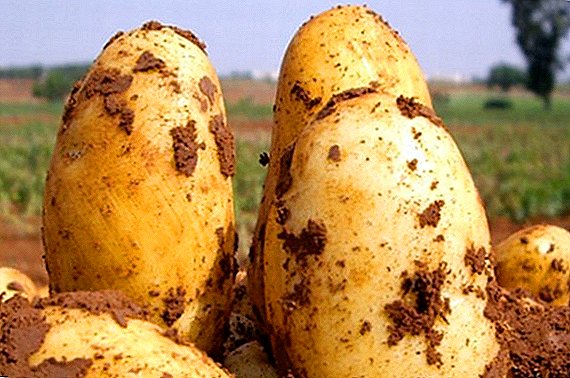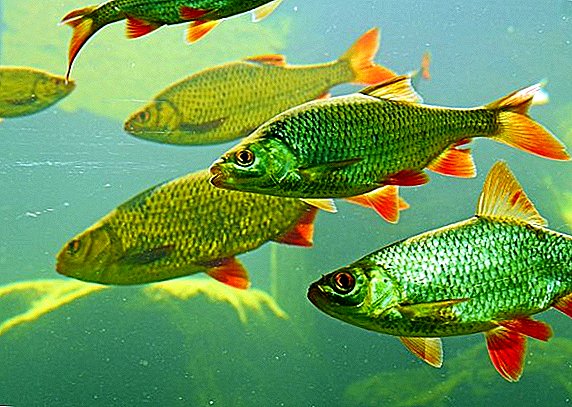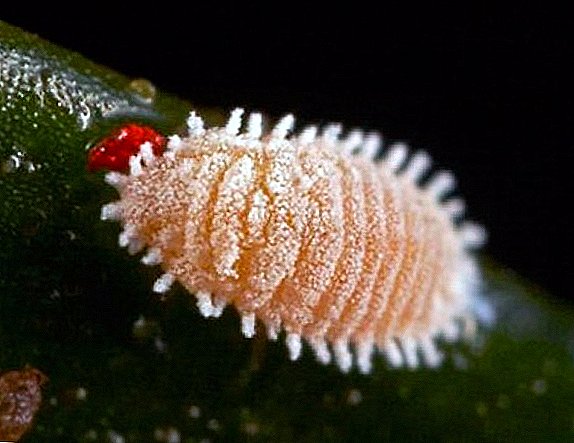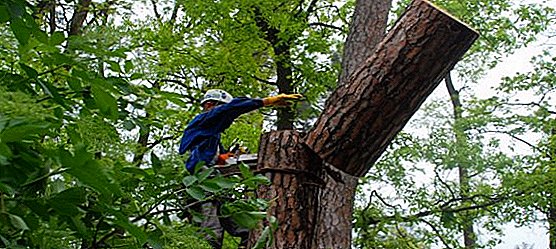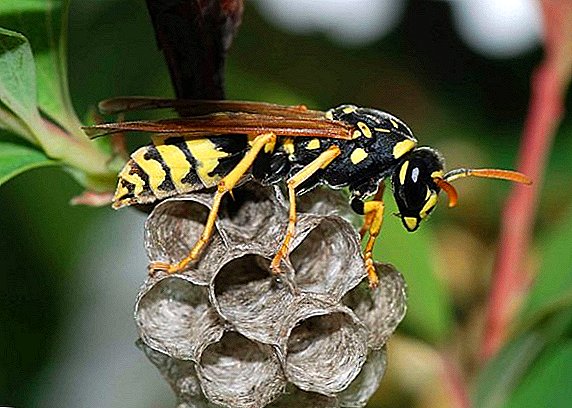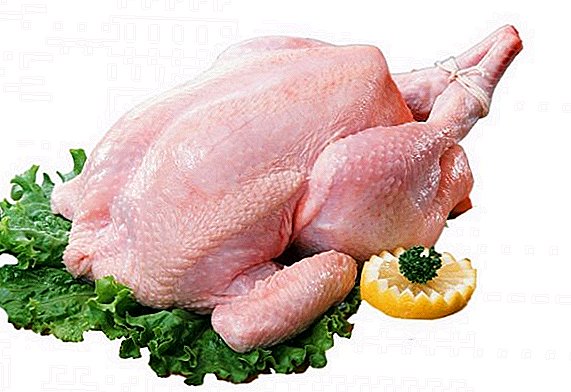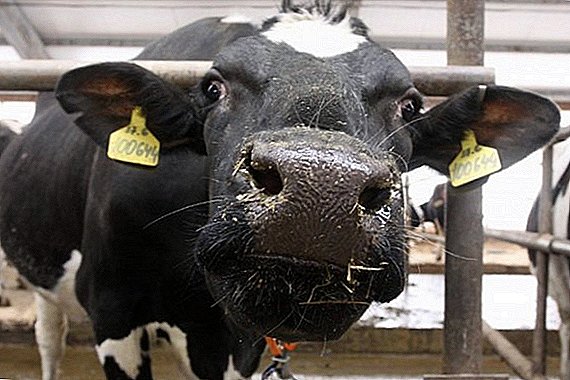 In order to understand how productive a cattle herd is, a livestock assessment is carried out. It helps to establish the tribal affiliation of each individual, and therefore increase the profitability of the farm, because the more pedigree the cattle, the more productive it is. In order to properly measure livestock, it is necessary to know all the details of the procedure.
In order to understand how productive a cattle herd is, a livestock assessment is carried out. It helps to establish the tribal affiliation of each individual, and therefore increase the profitability of the farm, because the more pedigree the cattle, the more productive it is. In order to properly measure livestock, it is necessary to know all the details of the procedure.
What is the rating of cattle
Cattle grading is an assessment of each individual on a number of grounds to determine its breeding value and the profitability of its further use. The procedure is carried out every year: cows are assessed after lactation, and young growth is assessed from the tenth month of their life. Zootechnics are tested by farm breeders and state enterprises.
Grading classes for cattle
According to the instructions of the Ministry of Agriculture, there are such classes of cattle:
- elite record;
- elite;
- Class I;
- II class.
Important! An animal can not always belong to the same class, as it grows throughout life, and its performance is either increasing or decreasing from year to year.Consider how to determine which class the cow belongs to. The quality of the cows is determined by the point scale. Separately, indicators of the yield and the milk yield rate (maybe a maximum of 60 points), external data, development and constitution (maximum 24 points), as well as the genotype (maximum 16 points) are evaluated.
 The scores for each category are summed up and the type of cows is determined by the total amount:
The scores for each category are summed up and the type of cows is determined by the total amount:- 80 and more points - elite record;
- 70-79 - elite;
- 60-69 - I;
- 50-59 - II.
To assess the belonging of bulls to the class, other criteria are used. They analyze the breed and origin, external data and physique, live weight, ability to reproduce offspring and its quality. The scale of points is similar to the scale for cows.
We recommend to get acquainted with the best representatives of cows of meat and dairy.
Evaluating the young, experts also analyze its external data, mass, genotype, belonging to the breed, the estimated productivity. But the point scale here looks different:
- 40 or more points - elite record;
- 35-39 - elite;
- 30-34 - I;
- 25-29 - II.

The main criteria for assessing representatives of the herd
There are a number of criteria by which each individual in the herd is assessed:
- origin and breed;
- milk productivity (fat) and milk yield;
- exterior and physique;
- quality of offspring;
- the ability of cows to machine milking;
- possibility of reproduction.
Important! Any individual from the herd regularly undergoes the procedure of appraisal during its lifetime.
How is the procedure
There is a certain sequence in the assessment of cattle:
- Determined breed.
- The estimated yield.
- Estimated appearance and physique.
- Final grade and class definition.
Determining the quality of breed. Breed of an animal is established according to documents on its origin, and also breed of the parent. In addition, each individual carefully examined. After that, the animal belongs to the group of purebred or hybrids.  Pure breed are:
Pure breed are:
- animals whose parents were of the same breed (documented);
- animals whose parents were crossbreeds of the fourth generation (from absorbing mating), documented;
- individuals with a pronounced breed;
- individuals belonging to the elite and the elite record.
Find out which breeds of beef gobies are best grown for fattening.
Mixtures are:
- individuals born after crossing two breeds, except for those breeds that are on a special list;
- animals obtained from crossing representatives of the same mixture;
- individuals that appeared after crossing local cattle with purebred and crossbred.
 A good example of exterior and constitutional indicators If the crossing was introductory, then the belonging to the breed is established as follows:
A good example of exterior and constitutional indicators If the crossing was introductory, then the belonging to the breed is established as follows:
- individuals that appeared as a result of the crossing of two initial breeds belong to the first generation;
- individuals that appeared as a result of the crossing of representatives of a crossbreed of the first generation with purebred improved breed belong to the second generation (3/4 blood) according to the breed of the mother;
- individuals that appeared as a result of the crossing of representatives of a crossbreed of the 2nd generation with purebreds with the severity of the type outlined by the plan are attributed to purebreds (maternal);
- animals obtained from crossing representatives of the same mixture of the second generation (3/4 of blood), depending on the severity of the planned type, belong to mixed breeds of the third or fourth generation of the improved breed.
 Determination of productivity. To determine the milk production of cows, you must consider:
Determination of productivity. To determine the milk production of cows, you must consider:- milk yield per 305 days of lactation in kilograms;
- milk fat indicators;
- the amount of milk fat in kilograms per lactation.
Assessment of the constitution and exterior. The appearance of cows is estimated at 2-3 months of lactation of the first and third calving. If, for some reason, the borenka could not be estimated after the first calving, they are performed after the second. Bulls are estimated every year until they reach five years.
When analyzing the external data of livestock and its physique, attention is paid to the severity of the breed type, the harmony of the physique, the strength of the lumbar and hind limbs (in bulls), the size, shape of the udder and its suitability for machine milking (in cows).
Read about how to milk a cow, as well as learn about the advantages and disadvantages of milking machines.
The constitution is rated on a scale (10 points maximum, accuracy - 0.5).  Appearance of young stock is rated on a 5-point scale (the highest score is “excellent”, then “good”, “satisfactory”, “unsatisfactory” and “bad”).
Appearance of young stock is rated on a 5-point scale (the highest score is “excellent”, then “good”, “satisfactory”, “unsatisfactory” and “bad”).
Important! In assessing young stock, intermediate values are acceptable: 3.5, 4.5, etc.
Final score. The result is summed up taking into account the following characteristics:
- Cows: milk production, appearance, physique, genotype.
- In manufacturing bulls: appearance and body type, genotype.
- In young animals: genotype, appearance, indicators of development.
Having set the final grade, each group of animals is divided into classes.
Instructions for bonding dairy cattle
For bonding of dairy cattle, you need:
- Calculate data on milk yield (in adult cows over the last three lactations, first-calves - for one, with two calves - for the last two).
- Take into account the protein content in milk.
- Calculate the average amount of fat in milk per milk yield and compare it with the data of representatives of class I.
- Analyze the fitness of the female cow to machine milking.
 Evaluation scheme of some articles in dairy cattle After collecting all the data, you need to accrue points (maximum 60). At these points, cows are divided into classes. Additional points are given for external data and body build (maximum of 24 points), as well as for genotype and tribal affiliation (maximum of 16 points).
Evaluation scheme of some articles in dairy cattle After collecting all the data, you need to accrue points (maximum 60). At these points, cows are divided into classes. Additional points are given for external data and body build (maximum of 24 points), as well as for genotype and tribal affiliation (maximum of 16 points).
Bonding cows meat direction
Meat cows are judged by appearance, starting from their first month of life. There are five categories to assess the young. In assessing beef cattle, the development of the skeleton, the shape of the hoof, vertebral bones, joints, and the development of the chest are taken into account.
Did you know? Israeli cows are considered to be champions in milk yield in the world. Among them there is one leader - the cow Shmil, bringing 17680 liters of milk per year with a fat content of 4.01% and a protein content of 3.44%. The average burenka in Israel brings 11343 liters per year.If it is necessary to assess the adult individuals, then the breed and productivity, development of the skeleton, skeleton, muscular volume are analyzed. Bulls must comply with certain standards for constitution, head position, chest development, adipose tissue and body weight.

Determination of the class of young
Testing of young stock begins to be carried out from the moment of weaning, but at the same time, the estimated individual should not be less than six months old. For a complex basis, the assessment is made on the basis of data on the origin, live weight, appearance, build, breed.
The determination of the class of young stock by origin is carried out in the same way as for adults. Given the results of tests on productivity, the determination of the general class of bulls is made.
| Determination of class of young stock by origin and body weight | ||||
| Live weight | By origin | |||
| Elite Record | Elite | I | II | |
| Elite Record | Elite Record | Elite Record | Elite | I |
| Elite | Elite | Elite | I | I |
| I | Elite | I | I | II |
| II | I | I | II | II |
| Determination of the general class of bulls based on the results of tests on their own productivity | ||||
| By live weight and origin | Cool assessment of own meat productivity | |||
| Elite Record | Elite | I | II | |
| Elite Record | Elite Record | Elite Record | Elite | I |
| Elite | Elite Record | Elite | I | I |
| I | Elite | Elite | I | II |
| II | Elite | I | I | II |
Find out how much an average cow weighs and what its weight depends on.
Bonding of hybrids from crossing dairy and dairy-beef cows and heifers with meat bulls is made according to the breed of the father. The class of the mother of the young of the young is determined by a number of characteristics characteristic of a particular breed, but without taking into account milk production.  Chicks with a live weight of 10% less than the norm for class II can be credited to this class, if by the remaining parameters they correspond to classes I and above. Chicks that come from purebred bulls of the elite-record class, elite and from classless cows of the second generation and above can also be classified as class II, if they are rated at 4 or more points in appearance and constitution, and .
Chicks with a live weight of 10% less than the norm for class II can be credited to this class, if by the remaining parameters they correspond to classes I and above. Chicks that come from purebred bulls of the elite-record class, elite and from classless cows of the second generation and above can also be classified as class II, if they are rated at 4 or more points in appearance and constitution, and .
In order for the bulls to be attributed to the elite-record and elite on complex grounds, their breed should be higher than III generation, and heifers - higher than II.
Determining the class of bulls
The determination of the class of bulls occurs according to a number of such data: breed, origin, mass, appearance, body build, and quality of offspring.
| Determining the class of bulls and young animals by origin | ||||
| By weight, exterior and constitution | Father class for a set of signs | |||
| Elite Record | Elite | I | II | |
| Elite Record | Elite Record | Elite Record | Elite | --- |
| Elite | Elite Record | Elite | I | --- |
| I | Elite | I | I | II |
| II | I | I | II | II |
| Determining the class of bulls by origin, body weight, exterior and constitution | ||||
| By weight, exterior and constitution | By origin | |||
| Elite Record | Elite | I | II | |
| Elite Record | Elite Record | Elite Record | Elite | I |
| Elite | Elite Record | Elite | I | I |
| I | Elite | I | I | II |
| II | I | II | II | II |
| Definition of a complex bull class, taking into account the quality of offspring | ||||
| By weight, exterior and constitution | By the quality of offspring | |||
| Elite Record | Elite | I | II | |
| Elite Record | Elite Record | Elite Record | Elite | I |
| Elite | Elite Record | Elite | I | II |
| I | Elite | Elite | I | II |
| II | Elite | I | I | II |
The elite-record and elite are those manufacturing bulls that belong to the third and higher generations by breed, and according to other data - to the second and higher generations.
 A change in the class of the complex of features during subsequent evaluations is possible if:
A change in the class of the complex of features during subsequent evaluations is possible if:
- changed data on live weight of a bull and assessment of appearance up to 5 years;
- parents improved their class performance;
- data appeared on the offspring.
Did you know? The Bull Repp of the Podolsk breed living in Ukraine is considered the best producer in the world. Every year, about 50 thousand healthy viable calves are born from this giant weighing over 1.5 tons after artificial insemination of cows.After receiving data on the valuation of their livestock, the farmer can develop a plan to improve the productivity of livestock. This will help make breeding cattle more profitable. In addition, the appraisal may indicate shortcomings in the management of the farm.


